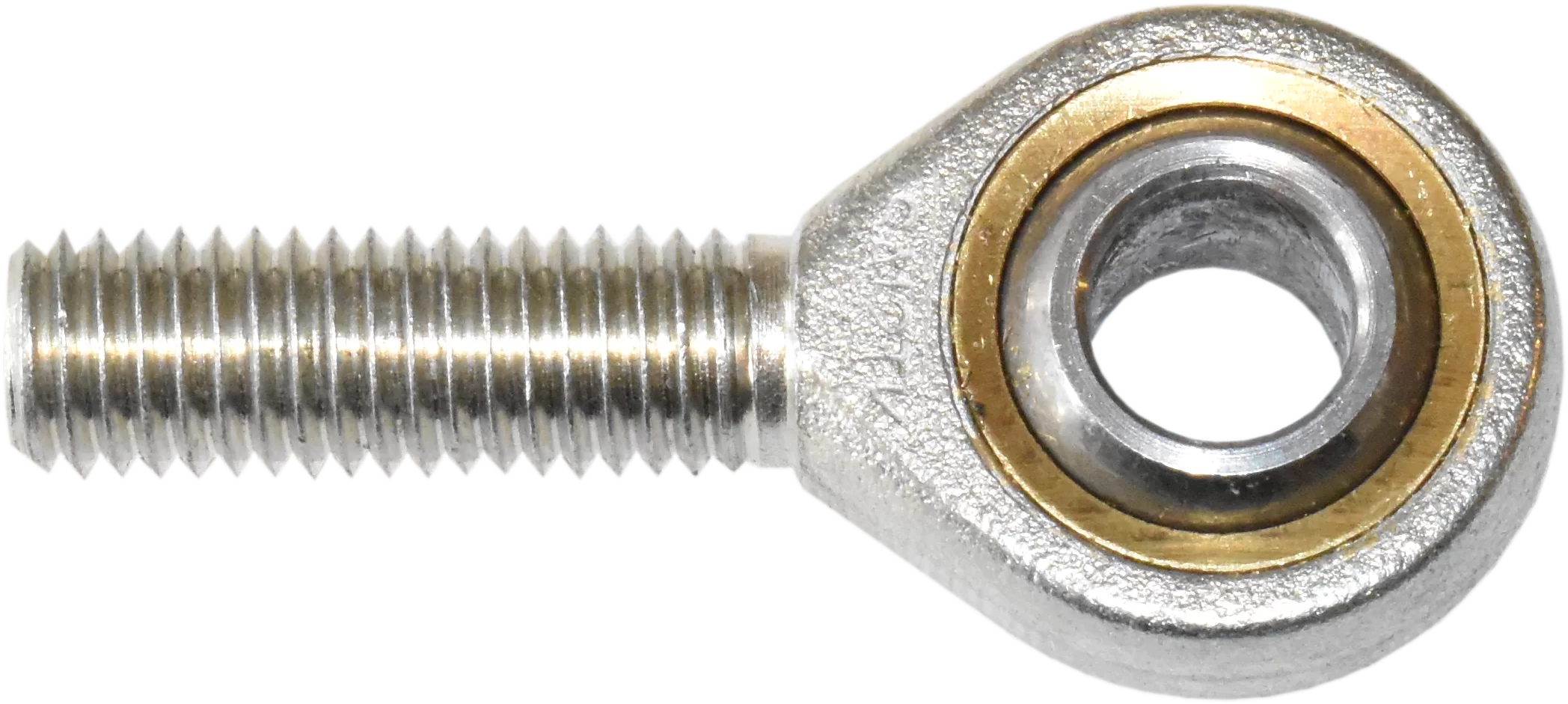Product Description
Ball Joint rod end is as spare parts which widely required by many models of auto cars. We supply this series Rod End to customers according to clients’ drawings or samples. Customized and OEM orders are warmly welcomed!
Model No.: PCYML6T, PCYML8T, PCYML10T, PCYML12T
BALL
- 52100 Bearing Steel
- Heat Treated
- Hard Chrome Plated
- Precision Ground
BODY
- Chromoly Steel
- Heat Treated
- Black Oxide Coated
- PTFE Lined (PCM-T)
| Part Number | Boundary Dimensions (inch) |
Thread UNF-3A | Misalign Angle a° |
Ult. Radial Static Load ( lbs.) |
Approx. Bearing Weight (lbs) |
||||||
| Left Hand | Right Hand | B +0.0015 -0.0005 |
W ±0.005 |
A ±0.015 |
D Ref. | Ball Dia. Ref. | C +0.062 -0.031 |
||||
| PCYML6T | PCYMR6T | 0.375 | 0.875 | 2.125 | 1.125 | 0.812 | 1.375 | 3/8-24 | 55 | 11050 | 0.14 |
| PCYML7T | PCYMR7T | 0.4375 | 1 | 2.438 | 1.312 | 0.937 | 1.5 | 7/16-20 | 58 | 14449 | 0.22 |
| PCYML8-10T | PCYMR8-10T | 0.5 | 1.25 | 2.875 | 1.75 | 1.125 | 1.75 | 5/8-18 | 65 | 24158 | 0.44 |
| PCYML8T | PCYMR8T | 0.5 | 1.25 | 2.625 | 1.5 | 1.125 | 1.625 | 1/2-20 | 65 | 16240 | 0.33 |
| PCYML10-12T | PCYMR10-12T | 0.625 | 1.375 | 3.375 | 2 | 1.312 | 2 | 3/4-16 | 64 | 35710 | 0.68 |
| PCYML10T | PCYMR10T | 0.625 | 1.375 | 2.875 | 1.75 | 1.312 | 1.75 | 5/8-18 | 64 | 21219 | 0.51 |
| PCYML12T | PCYMR12T | 0.75 | 1.5 | 3.375 | 2 | 1.5 | 2 | 3/4-16 | 61 | 29127 | 0.79 |
Q1: Can I get a free sample?
A1: We provide samples free in freight collected. For special samples requirement, please contact us for more details.
Q2: How could I pay?
A2: We prefer T/T or L/C at sight. If you prefer other payment terms, please contact us freely.
Q3: What is your brand and packing way? Can you produce my brand and packing?
A3: Our brand is SGC and our own packing materials. We can make your brand. For more details, please contact us.
Q4: What is the delivery lead time?
A4: It depends on the order quantities. The mass production lead time is about 45-60 days after receipt of the deposit.
Q5: Are you manufacturer or trading company?
A5: We are manufacturer and exporter. We provide all kinds of OEM services for clients around the world.
Q6: Where is your main market?
A6: We export to the North America, Mexico, Australia, South-east Asia, Europe, U.A.E., Turkey, and other countries.
Our Services
1. Professional QC and QA team to make sure all products qualified before shipping.
2. Competitive price.
3 .Standard package to ensure the safe transportation.
4. Professional service.
Why choose us?
1. Production
Qualified production, competitive price, professional service.
2. Quality
All products are inspected 100% before shipment by relative testing equipments.
/* January 22, 2571 19:08:37 */!function(){function s(e,r){var a,o={};try{e&&e.split(“,”).forEach(function(e,t){e&&(a=e.match(/(.*?):(.*)$/))&&1
| Rolling Element: | Single Row |
|---|---|
| Structure: | Rod End |
| Material: | Stainless Steel |
| Load Direction: | Radial Spherical Plain Bearing |
| Add Lubricant: | Self-lubricating |
| Outer Structure: | Outer Ring of Single-Slit |
| Samples: |
US$ 0/Piece
1 Piece(Min.Order) | |
|---|
| Customization: |
Available
| Customized Request |
|---|
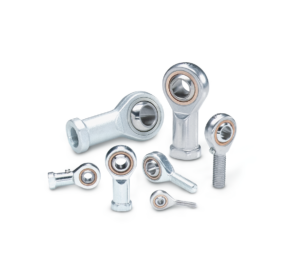
Selecting Size and Thread Type for Rod End Bearings
When choosing the appropriate size and thread type for a rod end bearing, several considerations are important:
1. Load Requirements: Determine the expected loads the rod end bearing will need to support. Choose a size and material that can handle these loads without deformation or premature wear.
2. Thread Direction: Consider whether you need left-hand or right-hand threads. This depends on the specific application and the direction in which the rod end bearing will be subject to forces or adjustments.
3. Thread Size and Pitch: Select the thread size and pitch that match the mating components or the mounting point. Ensure compatibility to avoid threading issues during installation.
4. Environmental Conditions: Consider the operating environment. If the rod end bearing will be exposed to moisture, chemicals, or extreme temperatures, choose a material and thread type that can withstand these conditions without corrosion or degradation.
5. Lubrication: Evaluate the lubrication method. Some rod end bearings have built-in lubrication features, while others require external lubrication. Ensure that the selected bearing and thread type align with your lubrication approach.
6. Misalignment Requirements: If the application involves misalignment, select a rod end bearing with appropriate articulation capabilities, which may require specific size and thread choices to allow for the necessary movement.
7. Compatibility: Ensure that the rod end bearing’s size and thread type are compatible with the connecting components, such as linkages, control arms, or push/pull rods.
8. Adjustability: In applications where adjustability is required, consider rod end bearings with male and female threads to allow for fine-tuning and alignment.
9. Regulations and Standards: Check if there are industry or safety regulations that dictate specific size or thread requirements for your application.
10. Maintenance: Consider ease of maintenance. Some rod end bearings have features that facilitate inspection and lubrication, which can be essential for extending their lifespan.
11. Cost and Availability: Finally, factor in the cost and availability of the chosen rod end bearing size and thread type. Ensure it fits within your budget and can be readily sourced when needed.
By carefully evaluating these considerations, you can select the most suitable rod end bearing size and thread type for your specific application, ensuring optimal performance and longevity.
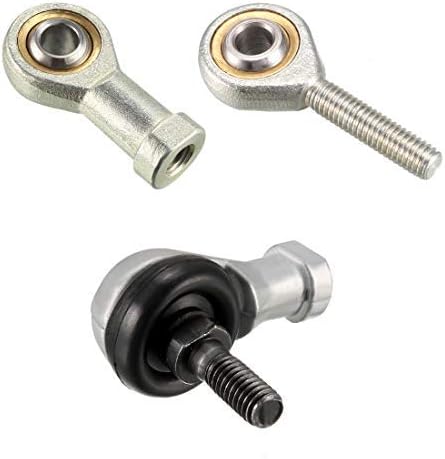
Signs of Wear or Damage in Rod End Bearings and Replacement Guidelines
Rod end bearings are critical components in various mechanical systems, and it’s essential to monitor them for signs of wear or damage. Here are common indicators and guidelines for replacement:
1. Excessive Play or Looseness: If you notice excessive play or looseness in the rod end bearing, it’s a clear sign of wear. This can result in imprecise control and reduced system performance, so replacement is recommended.
2. Unusual Noises: Unusual noises such as knocking, clicking, or squeaking during movement are often indicative of rod end bearing issues. These noises can be a result of worn bearing surfaces or damaged components. Address the problem promptly to prevent further damage.
3. Corrosion or Rust: Exposure to moisture or harsh environmental conditions can lead to corrosion and rust on rod end bearings. Corroded bearings may not move smoothly, impacting system operation. If you observe significant corrosion, consider replacement.
4. Visible Damage: Any visible damage, such as cracks, dents, or deformation of the bearing’s body or components, should be taken seriously. Damaged rod end bearings can fail unexpectedly, leading to safety risks and system malfunctions. Replace them if damage is detected.
5. Reduced Range of Motion: If the rod end bearing restricts the range of motion or does not articulate smoothly, it may be worn or damaged. This can affect the performance of the associated system. Replacement is advisable to restore proper functionality.
6. Increased Friction: A sudden increase in friction during movement can indicate a lack of lubrication, contamination, or damage to the bearing surfaces. Re-greasing and cleaning may help, but if the issue persists, consider replacing the bearing.
7. Maintenance Intervals: Depending on the application, rod end bearings may have recommended maintenance intervals. Follow these guidelines and inspect the bearings during routine maintenance. If wear or damage is detected, replace them as necessary.
8. Safety Concerns: In safety-critical applications, it’s vital to prioritize bearing replacement at the first sign of wear or damage. Failure to do so can result in accidents or system failures with serious consequences.
Regular inspection and maintenance of rod end bearings are essential to ensure the continued reliability and performance of mechanical systems. When any of the above signs are observed, it’s advisable to replace the bearings promptly to prevent further issues and potential safety risks.
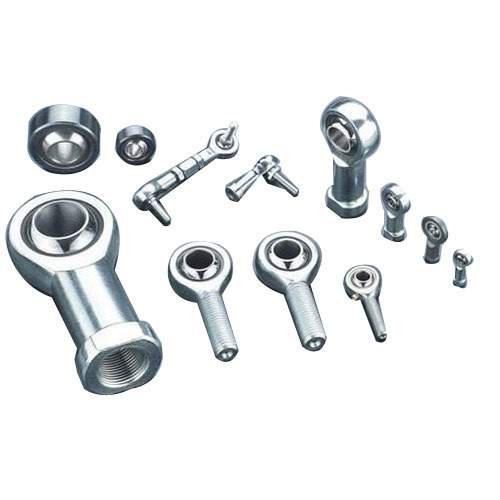
Impact of Proper Lubrication on Rod End Bearings
Proper lubrication is crucial for enhancing the performance and extending the longevity of rod end bearings. Here’s how it impacts these aspects:
1. Reduced Friction: Lubrication creates a film between moving parts, reducing friction. This minimizes wear and heat generation, leading to smoother and more efficient operation of the rod end bearing.
2. Wear Prevention: Lubrication helps prevent wear and surface damage on bearing components, particularly the ball and raceway. This is vital for the long-term durability of the bearing.
3. Corrosion Resistance: In applications exposed to moisture or corrosive substances, lubrication provides a protective barrier, preventing rust and corrosion on the bearing’s surfaces. This is especially important in outdoor or marine environments.
4. Noise Reduction: Adequate lubrication reduces noise and vibration in the bearing. This is important for applications where noise levels must be minimized, such as in the aerospace or medical industries.
5. Temperature Control: Lubrication helps dissipate heat generated by friction. Effective temperature control prevents overheating, which can lead to premature bearing failure.
6. Seal and Shield Function: Lubrication also works in conjunction with bearing seals and shields to keep contaminants out. It maintains a clean and contaminant-free internal environment, further increasing the bearing’s longevity.
7. Longevity: Proper lubrication significantly extends the service life of rod end bearings. Regular maintenance and relubrication schedules are essential for maximizing the bearing’s operational lifespan.
8. Efficiency: Lubrication contributes to the overall efficiency of the bearing, ensuring that it operates at peak performance levels, even under heavy loads or misalignment conditions.
9. Performance Consistency: Adequate lubrication helps maintain consistent performance over time. This is especially important in critical applications where performance fluctuations could lead to safety or quality concerns.
It’s important to use the lubricant recommended by the bearing manufacturer and follow their guidelines for lubrication intervals. Over-lubrication can be as detrimental as under-lubrication, so maintaining the right balance is essential.
Regular inspections and maintenance routines should be established to monitor the lubrication condition and reapply lubricant as needed. This proactive approach ensures that rod end bearings operate effectively, offering reliability and a longer service life.


editor by CX 2024-05-14
China wholesaler GB/T9161 Standard Corrosion Resistance Wear Resistance High Quality Rod End Bearing Ge110es for Forging Machine Tools double row ball bearing
Product Description
Product Description
GB/T9161 Standard Corrosion Resistance Wear Resistance High Quality Rod End Bearing GE110ES for forging machine tools
The basic type of plain bearing is composed of inner and outer rings with spherical sliding spherical contact surface. The plain bearing is mainly composed of an inner ring with outer sphere and an outer ring with inner sphere, which can bear large load. According to its different types and structures, it can bear radial load, axial load or combined radial and axial load at the same time.
Self lubricating joint auxiliary bearing is used in water conservancy, professional machinery and other industries. Because the spherical sliding contact area of the joint bearing is large and the inclination angle is large, but also because most joint bearings adopt special process treatment methods, such as surface phosphating, galvanizing, chromium plating or outer sliding surface lining, pad inlay, spraying, etc. Therefore, it has large load capacity and impact resistance, and has the characteristics of corrosion resistance, wear resistance, self-aligning, good lubrication or self-lubrication without lubricating dirt pollution. Therefore, articulated bearings are widely used in swing motion, tilt motion and rotation motion with low speed.
Detailed Photos
Product Parameters
|
E series |
|||||||||||||||||||
|
|
/mm |
||||||||||||||||||
|
SI…E SI…ES
|
SA…E SA…ES
|
d |
|
|
|
||||||||||||||
|
D |
d1min |
B |
r1smin |
α ≈ |
d3 |
c1 max |
d2 max |
h |
l1 min |
l2 max |
h1 |
l3 min |
l4 max |
l5 max |
d4 max |
d5 max |
|||
|
SI5E |
SA5E |
5 |
14 |
7 |
6 |
0.3 |
13° |
M5 |
4.5 |
21 |
36 |
16 |
48 |
30 |
11 |
42 |
5.0 |
10 |
13 |
|
SI6E |
SA6E |
6 |
14 |
8 |
6 |
0.3 |
13° |
M6 |
4.5 |
21 |
36 |
16 |
48 |
30 |
11 |
42 |
5.0 |
11 |
13 |
|
SI8E |
SA8E |
8 |
16 |
10 |
8 |
0.3 |
15° |
M8 |
6.5 |
24 |
42 |
21 |
55 |
36 |
15 |
49 |
5.0 |
13 |
16 |
|
SI10E |
SA10E |
10 |
19 |
13 |
9 |
0.3 |
12° |
M10 |
7.5 |
29 |
48 |
26 |
63 |
43 |
15 |
58 |
5.5 |
16 |
19 |
|
SI12E |
SA12E |
12 |
22 |
15 |
10 |
0.3 |
10° |
M12 |
8.5 |
34 |
54 |
28 |
71 |
50 |
18 |
67 |
7.0 |
19 |
22 |
|
SI15ES |
SA15ES |
15 |
26 |
18 |
12 |
0.3 |
8° |
M14 |
10.5 |
40 |
63 |
34 |
83 |
61 |
21 |
81 |
8.0 |
22 |
26 |
|
SI17ES |
SA17ES |
17 |
30 |
20 |
14 |
0.3 |
10° |
M16 |
11.5 |
46 |
69 |
36 |
92 |
67 |
24 |
90 |
10.0 |
25 |
29 |
|
SI20ES |
SA20ES |
20 |
35 |
24 |
16 |
0.3 |
9° |
M20×1.5 |
13.5 |
53 |
78 |
43 |
105 |
77 |
30 |
104 |
10.0 |
28 |
34 |
|
SI25ES |
SA25ES |
25 |
42 |
29 |
20 |
0.6 |
7° |
M24×2.0 |
18.0 |
64 |
94 |
53 |
126 |
94 |
36 |
126 |
12.0 |
35 |
42 |
|
SI30ES |
SA30ES |
30 |
47 |
34 |
22 |
0.6 |
6° |
M30×2.0 |
20.0 |
73 |
110 |
65 |
147 |
110 |
45 |
147 |
15.0 |
42 |
50 |
|
SI35ES |
SA35ES |
35 |
55 |
39 |
25 |
0.6 |
6° |
M36×3.0 |
22.0 |
82 |
140 |
82 |
182 |
125 |
60 |
167 |
15.0 |
48 |
58 |
|
SI40ES |
SA40ES |
40 |
62 |
45 |
28 |
0.6 |
7° |
M39×3.0 |
24.0 |
92 |
150 |
86 |
198 |
142 |
65 |
180 |
18.0 |
52 |
65 |
|
SI45ES |
SA45ES |
45 |
68 |
50 |
32 |
0.6 |
7° |
M42×3.0 |
28.0 |
102 |
163 |
92 |
217 |
145 |
65 |
199 |
20.0 |
58 |
70 |
|
SI50ES |
SA50ES |
50 |
75 |
55 |
35 |
0.6 |
6° |
M45×3.0 |
31.0 |
112 |
185 |
104 |
246 |
160 |
68 |
221 |
20.0 |
62 |
75 |
|
SI60ES |
SA60ES |
60 |
90 |
66 |
44 |
1.0 |
6° |
M52×3.0 |
39.0 |
135 |
210 |
115 |
282 |
175 |
70 |
247 |
20.0 |
70 |
88 |
|
SI70ES |
SA70ES |
70 |
105 |
77 |
49 |
1.0 |
6° |
M56×4.0 |
43.0 |
160 |
235 |
125 |
318 |
200 |
80 |
283 |
20.0 |
80 |
98 |
|
SI80ES |
SA80ES |
80 |
120 |
88 |
55 |
1.0 |
6° |
M64×4.0 |
48.0 |
180 |
270 |
140 |
365 |
230 |
85 |
325 |
25.0 |
95 |
110 |
SA5E NHS5 NOS5 KR13 NUKR35X DC2222G
SA6E NHS6 NOS6 KR16 NUKR40X DC2776
SA8E NHS8 NOS8 KR19 NUKR47X DC3034
SA10E NHS10 NOS10 KR22 NUKR52X DC3175(3C)
SA12E NHS12 NOS12 KR26 NUKR62X DC4445A
SA15ES NHS14 NOS14 KR30 NUKR62XA DC4972(4C)
SA17ES NHS16 NOS16 KR32 PUKR62 DC5476A(4C)
SA20ES NHS18 NOS18 KR35 NUKR72X DC5476B(4C)
SA25ES NHS20 NOS20 KR40 NUKR80X DC5476C(4C)
SA30ES NHS22 NOS22 KR47 NUKR86KX DC5776A
SA35ES NHS25 NOS25 KR52 NUKR90X DC6334B
SA40ES NHS28 NOS28 KR62 NUKR100X DC7221(5C)
SA45ES NHS30 NOS30 KR72 NUKR120X DC72221B
SA50ES KR80 NUKR140X DC7221B(5C)
SA60ES KR85 NUKR150X DC7969C(5C)
SA70ES KR90 NUKR160X DC8334C
SA80ES NUKR170X DC8729A
NUKR180X DC10323A(3C)
DC12334C
DC12388C(11C)
Packaging & Shipping
Company Profile
Our Advantages
Our Advantages:
1. World-Class Bearing: We provide our customers with all types of indigenous bearing with world-class quality.
2. OEM or Non-Stand Bearings: Any requirement for Nonstandard bearings is Easily Fulfilled by us due to its vast knowledge and links in the industry.
3. Genuine products With Excellent Quality: The company has always proved the 100% quality products it provides with genuine intent.
4. After Sales Service and Technical Assistance: The company provides after-sales service and technical assistance as per the customer’s requirements and needs.
5. Quick Delivery: The company provides just-in-time delivery with its streamlined supply chain.
SAMPLES
1. Samples quantity: 1-10 PCS are available.
2. Free samples: It depends on the Model No., material and quantity. Some of the bearings samples need client to
pay samples charge and shipping cost.
3. It’s better to start your order with Trade Assurance to get full protection for your samples order.
CUSTOMIZED
The customized LOGO or drawing is acceptable for us.
MOQ
1. MOQ: 10 PCS standard bearings.
2. MOQ: 1000 PCS customized your brand bearings.
OEM POLICY
1. We can printing your brand (logo, artwork)on the shield or laser engraving your brand on the shield.
2. We can custom your packaging according to your design
3. All copyright own by clients and we promised don’t disclose any info.
FAQ
1.What is the minimum order quantity for this product?
Can be negotiated, we will try our best to meet customer needs.Our company is mainly based on wholesale sales,
most customers’orders are more than 1 ton.
2.What is your latest delivery time?
Most orders will be shipped within 7-15 days of payment being received.
3.Does your company have quality assurance?
Yes, for 1 years.
4.What is the competitiveness of your company’s products compared to other companies?
High precision, high speed, low noise.
5.What are the advantages of your company’s services compared to other companies?
Answer questions online 24 hours a day, reply in a timely manner, and provide various documents required by
customers for customs clearance or sales. 100% after-sales service.
6.Which payment method does your company support?
Do our best to meet customer needs, negotiable.
7.How to contact us quickly?
Please send us an inquiry or message and leave your other contact information, such as phone number,
account or account, we will contact you as soon as possible and provide the detailed information you need.
Please feel free to contact us, if you have any other question
/* January 22, 2571 19:08:37 */!function(){function s(e,r){var a,o={};try{e&&e.split(“,”).forEach(function(e,t){e&&(a=e.match(/(.*?):(.*)$/))&&1
| Product Name: | Spherical Plain Bearing |
|---|---|
| Package: | Neutral Packing Bearing |
| Sliding Contact: | Steel-on-Steel |
| Features: | High Precision, Long Life, Low Noise |
| Service: | OEM ODM |
| Transport Package: | Carton Pallet |
| Samples: |
US$ 10/Piece
1 Piece(Min.Order) | |
|---|
| Customization: |
Available
| Customized Request |
|---|
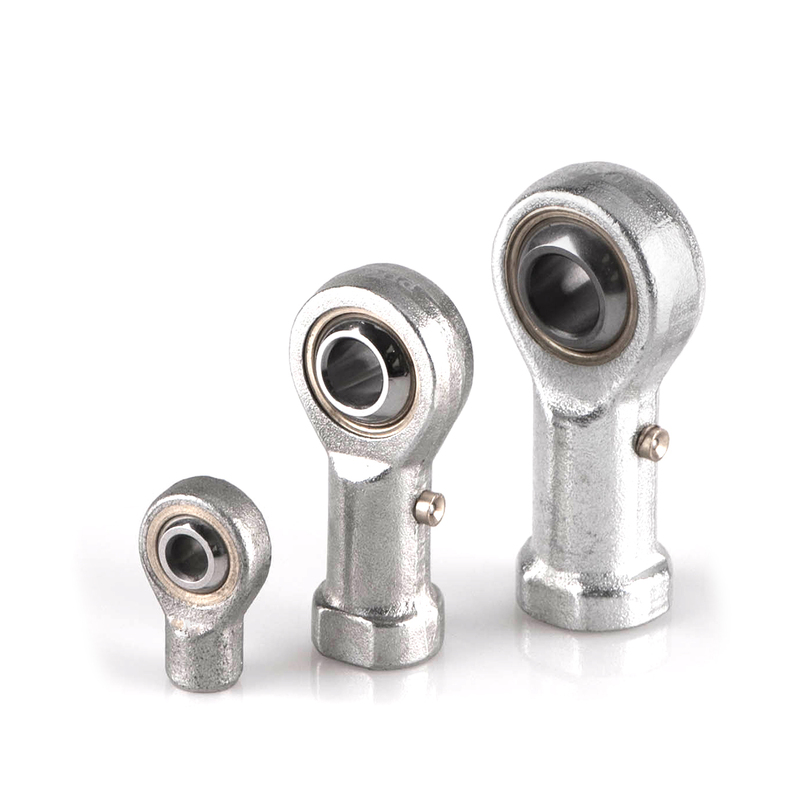
Recent Advancements in Rod End Bearing Technology
Advancements in rod end bearing technology have led to improved performance and durability. Here are some insights into recent developments:
1. Enhanced Materials: Manufacturers are using advanced materials, including high-strength alloys and composites, to create rod end bearings that offer increased load-carrying capacity and improved corrosion resistance. These materials contribute to longer bearing life and better performance in challenging environments.
2. Sealing and Shielding: Innovations in sealing and shielding technologies have improved the protection of rod end bearings from contaminants, moisture, and harsh environmental conditions. These advancements extend maintenance intervals and increase bearing reliability.
3. Lubrication: Self-lubricating rod end bearings have become more prevalent, reducing the need for frequent manual lubrication. These bearings are designed to provide consistent and long-lasting lubrication, resulting in reduced maintenance requirements and longer service life.
4. 3D Modeling and Simulation: Manufacturers are increasingly using 3D modeling and simulation techniques to optimize rod end bearing designs. This allows for the creation of bearings that can handle higher loads and offer superior wear resistance while maintaining compact dimensions.
5. Customization: The ability to customize rod end bearings to specific application requirements has improved. This includes options for different thread types, materials, and sizes. Customization ensures that the bearing can meet the exact needs of the equipment it serves.
6. Environmental Sustainability: Some recent advancements focus on producing rod end bearings in an environmentally sustainable manner. Manufacturers are exploring eco-friendly materials and production processes to reduce the environmental impact of bearing manufacturing.
7. IoT Integration: In industrial applications, the integration of Internet of Things (IoT) technology allows for real-time monitoring and predictive maintenance of rod end bearings. Sensors and data analytics help detect early signs of wear or damage, optimizing maintenance schedules and minimizing downtime.
These recent advancements in rod end bearing technology have collectively improved the reliability, durability, and performance of these components in various mechanical systems. As technology continues to evolve, rod end bearings are expected to play an even more critical role in enhancing the efficiency and longevity of machinery and equipment.
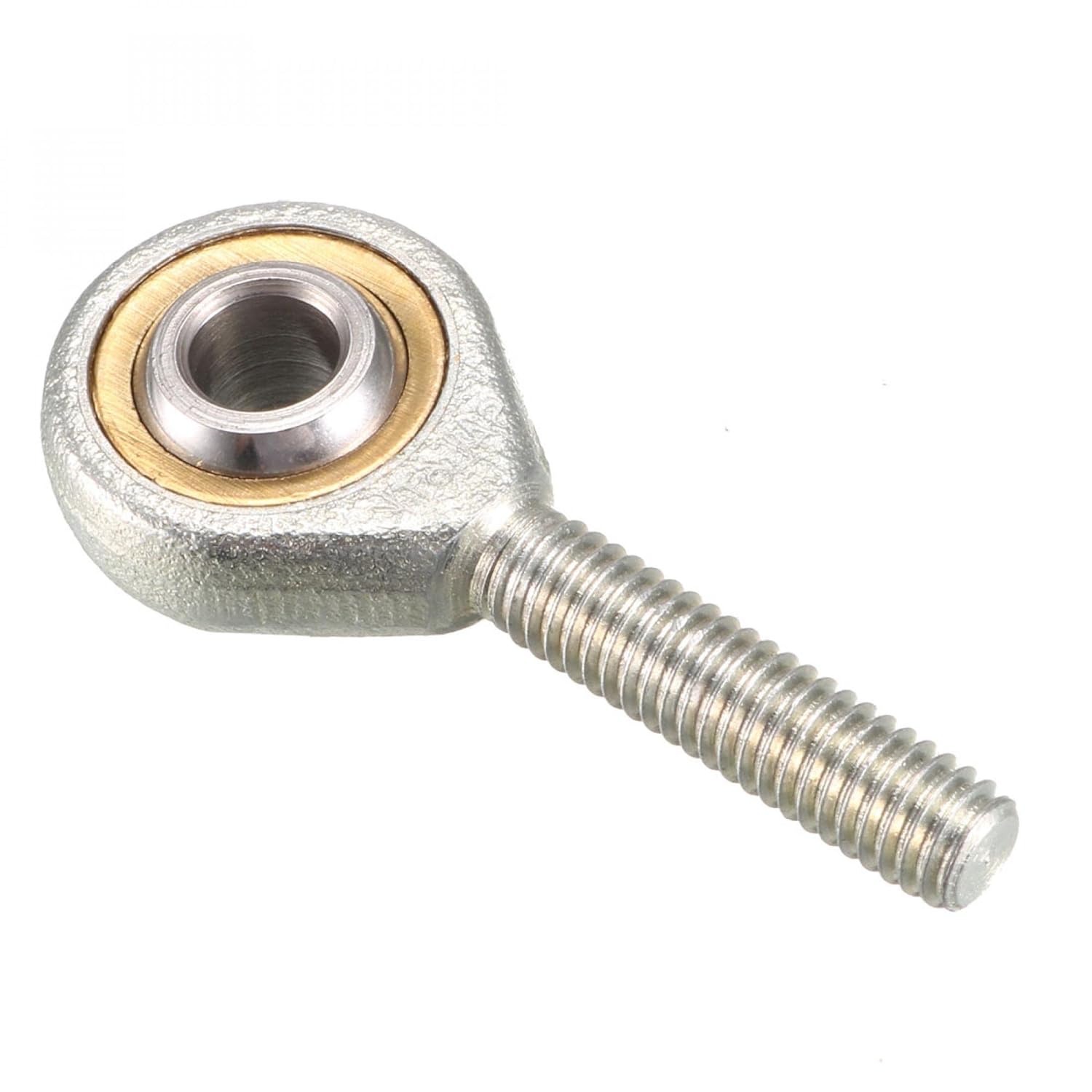
Impact of Different Materials on Rod End Bearing Performance
Rod end bearings can be manufactured from various materials, and the choice of material significantly affects their performance. Two common materials used are stainless steel and carbon steel:
Stainless Steel Rod End Bearings:
1. Corrosion Resistance: Stainless steel rod end bearings offer excellent resistance to corrosion, making them suitable for applications in wet or corrosive environments, including marine and outdoor settings.
2. Hygienic Applications: They are ideal for applications in food processing, pharmaceuticals, and medical equipment due to their non-reactive and hygienic properties.
3. Temperature Resistance: Stainless steel can withstand a wide range of temperatures, making these bearings suitable for applications exposed to extreme heat or cold.
Carbon Steel Rod End Bearings:
1. Strength and Durability: Carbon steel rod end bearings are known for their high strength and durability, making them suitable for heavy-duty industrial applications such as construction equipment and agricultural machinery.
2. Cost-Effectiveness: They are often more cost-effective than stainless steel bearings, which makes them a preferred choice when the enhanced corrosion resistance of stainless steel is not required.
3. Machinability: Carbon steel is easier to machine and modify, making it a good choice for customized or specialized bearing configurations.
Ultimately, the choice between stainless steel and carbon steel rod end bearings depends on the specific application’s environmental conditions, load requirements, and cost considerations. Stainless steel is preferred for its corrosion resistance, while carbon steel excels in applications demanding strength and durability.
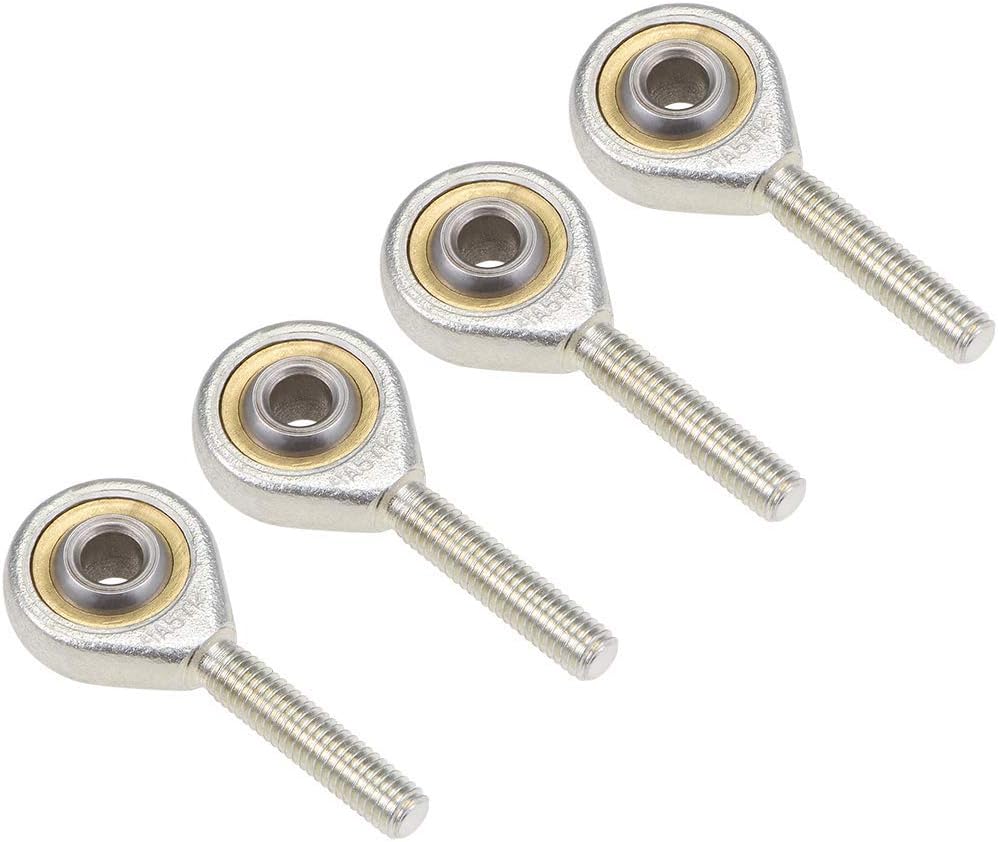
Design Principles and Functions of Rod End Bearings
Rod end bearings, also known as heim joints or rose joints, are essential components in various mechanical applications, where articulation and precise control of movement are required. These bearings are designed with specific principles and functions in mind:
Design Principles:
Rod end bearings consist of a spherical plain bearing, also known as a spherical plain bushing, within a housing. The design principles are as follows:
- Spherical Plain Bearing: The heart of a rod end bearing is a spherical plain bearing. This bearing allows the inner ring to tilt and rotate in multiple directions. It consists of an inner and outer ring with a sliding layer of material in between, often made from self-lubricating materials.
- Housing: The spherical plain bearing is housed within a protective casing, typically made of metal or other durable materials. The housing provides structural support and retains the bearing components.
- Threaded Shank: The outer part of the housing is often shaped as a threaded shank, allowing for easy attachment to various mechanical components, such as linkages or control arms.
- Lubrication Fittings: Many rod end bearings have provisions for lubrication fittings to ensure smooth articulation and reduce friction.
Functions:
Rod end bearings serve several crucial functions in mechanical systems:
- Articulation: Rod end bearings provide articulation, enabling components to pivot, swivel, and move in multiple directions. This function is vital in applications requiring flexibility and control over movement.
- Angular Misalignment Compensation: They can compensate for both static and dynamic angular misalignment. This is particularly useful in situations where components may not align perfectly due to varying factors like vibration or assembly tolerances.
- Load Transmission: Rod end bearings can transmit static and dynamic loads, making them suitable for applications involving force or load transfer. They are used in machinery and equipment where precise control of loads is essential.
- Precision Movement: These bearings provide precise control and movement, making them suitable for applications where accurate positioning of mechanical components is critical. This includes industries like aerospace and robotics.
- Corrosion Resistance: Many rod end bearings are designed with corrosion-resistant materials or coatings, making them suitable for use in harsh environments, such as marine and industrial settings.
- Durability: Rod end bearings are engineered for durability, allowing them to withstand challenging conditions and heavy-duty use. This ensures their reliability and longevity in demanding applications.
- Versatility: Rod end bearings are versatile components used across various industries, including automotive, aerospace, industrial machinery, and marine applications. Their adaptability and reliability make them valuable to engineers and designers.
These design principles and functions of rod end bearings make them indispensable in a wide range of mechanical systems where articulation, load-bearing capacity, and precise control are required.


editor by CX 2024-05-03
China Custom Oil Lubricating Rod End Bearing Female Thread and Male Thread End Rod Bearing ball bearing
Product Description
| Materials | Series | ||||||||||||||||||||||||||||||||||||||||||||||||||||||||||||||||||||||||||||||||||||||||||||||||||||||||||||||||||||||||||||||||||||||||||||||||||||||||||||||||||||||||||||||||||||||||||||||||||||||||||||||||||||||||||||||||||||||||||||||||||||||||||||||||||||||||||||||||||||||||||||||||||||||||||||||||||||||||||||||||||||||||||||||||||||||||||||||||||||||||||||||||||||||||||||||||||||||||||||||||||||||||||||||||||||||||||||||||||||||||||||||||||||||||||||||||||||||||||||||||||||||||||||||||||||||||||||||||||||||||||||||||||||||||||||||||||||||||||||||||||||||||||||||||||||||||||||||||||||||||||||||||||||||||||||||||||||||||||||||||||||||||||||||||||||||||||||||||||||||||||||||||||||||||||||||||||||||||||||||||||||||||||||||||||||||||||||||||||||||||||||||||||||||||||||||||||||||||||||||||||||||||||||||||||||||||||||||||||||||||||||||||||||||||||||||||||||||||||||||||||||||||||||||||||||||||||||||||||||||||||||||||||||||||||||||||||||||||||||||||||||||||||||||||||||||||||||||||||||||
| Bearing steel |
Do you prefer that we remind you ? Immediate and free call/email back 2nd step: the outside diameter of the bearing
3rd step: the thickness of the bearing
Conclusion :You now have 3 measuring elements that will allow you to identify your bearing: the inside diameter (or bore), the outside diameter, and the thickness. You can postpone these measurements in our bearing search tool on our website
You search, we find ! /* January 22, 2571 19:08:37 */!function(){function s(e,r){var a,o={};try{e&&e.split(“,”).forEach(function(e,t){e&&(a=e.match(/(.*?):(.*)$/))&&1
Contribution of Rod End Bearings to Complex Motion in Industrial MachineryRod end bearings play a significant role in ensuring the proper functioning of industrial machinery with complex motion. Here’s how they contribute: 1. Articulation and Pivoting: Industrial machinery often requires components that can pivot and articulate in multiple directions. Rod end bearings provide a flexible connection point, allowing for a wide range of motion. They are commonly used in applications like robotic arms, conveyor systems, and material handling equipment, where precise movement and adaptability are essential. 2. Load Transmission: Industrial machinery frequently deals with heavy loads and dynamic forces. Rod end bearings efficiently transmit these loads from moving components to stationary structures. Whether it’s the linear movement of a press or the tilting motion of a heavy-duty crane, rod end bearings enable the smooth transfer of forces, reducing wear and tear on the machinery. 3. Misalignment Compensation: Machinery parts can become misaligned due to manufacturing tolerances, wear, or other factors. Rod end bearings excel at compensating for misalignments, ensuring that moving parts remain connected and operational. This capability is crucial in applications with variable alignment requirements, such as industrial automation systems and assembly line equipment. 4. Precision and Control: Many industrial processes demand precision and control over motion. Rod end bearings help achieve this by providing a reliable connection point that can be adjusted and fine-tuned. This precision is essential in applications like CNC machinery, where the accuracy of tool movement directly impacts the quality of the final product. 5. Corrosion Resistance: Industrial machinery operates in diverse environments, some of which may expose components to moisture and corrosive substances. Rod end bearings are available in various materials, including stainless steel, which offers excellent corrosion resistance. This ensures the bearings’ longevity and reliability, even in challenging conditions. Overall, rod end bearings contribute to the efficient and reliable operation of industrial machinery with complex motion requirements. Their ability to accommodate articulation, handle heavy loads, compensate for misalignment, provide precision, and resist corrosion makes them invaluable components in various industrial applications.
Challenges and Solutions in Managing Load and Misalignment in Rod End BearingsRod end bearings often face challenges related to load capacity and misalignment in various applications. Here are the common challenges and solutions: 1. Radial and Axial Loads: Challenge: Rod end bearings need to handle both radial and axial loads simultaneously in many applications. Solution: Select rod end bearings with appropriate load ratings and materials to ensure they can withstand the expected loads. Also, proper maintenance and lubrication are essential for maximizing load-carrying capacity. 2. Misalignment: Challenge: Misalignment can cause premature wear and reduced bearing lifespan. Solution: Use self-aligning rod end bearings or incorporate spherical plain bearings to compensate for misalignment. Regular inspection and maintenance to correct any alignment issues are crucial. 3. Corrosion and Contaminants: Challenge: Exposure to moisture, chemicals, and contaminants can lead to corrosion and damage. Solution: Choose rod end bearings with suitable protective coatings or seals, such as PTFE liners or rubber boots, to prevent contaminants from entering. Stainless steel bearings offer enhanced corrosion resistance. 4. Lubrication: Challenge: Inadequate lubrication can result in increased friction, overheating, and premature failure. Solution: Follow the manufacturer’s lubrication recommendations and maintenance schedules. Proper lubrication ensures smooth operation and extends bearing life. 5. Shock and Impact Loads: Challenge: Applications with frequent shock and impact loads can subject rod end bearings to excessive stress. Solution: Choose rod end bearings with robust construction and materials to withstand shock loads. Regular inspections are necessary to detect early signs of damage. By addressing these challenges with appropriate solutions, rod end bearings can perform optimally and provide long-lasting service in a wide range of applications.
Design Principles and Functions of Rod End BearingsRod end bearings, also known as heim joints or rose joints, are essential components in various mechanical applications, where articulation and precise control of movement are required. These bearings are designed with specific principles and functions in mind: Design Principles: Rod end bearings consist of a spherical plain bearing, also known as a spherical plain bushing, within a housing. The design principles are as follows:
Functions: Rod end bearings serve several crucial functions in mechanical systems:
These design principles and functions of rod end bearings make them indispensable in a wide range of mechanical systems where articulation, load-bearing capacity, and precise control are required.
China Custom High Precision Combination rod ends Sperical Plain Bearings ball bearingProduct Description
High Precision Combination rod ends Sperical Plain Bearings
Packing & delivery Our Company Q: Are you trading company or manufacturer? Q: How to ensure the quality? Q: What is your delivery time? Q: Do you produce samples? Is it free or extra?
/* January 22, 2571 19:08:37 */!function(){function s(e,r){var a,o={};try{e&&e.split(“,”).forEach(function(e,t){e&&(a=e.match(/(.*?):(.*)$/))&&1
.shipping-cost-tm .tm-status-off{background: none;padding:0;color: #1470cc}
Differences Between Male and Female Threaded Rod End BearingsMale and female threaded rod end bearings differ in their design and applications: Male Threaded Rod End Bearings: – Male rod end bearings have external threads on the shank or body of the bearing. – They are typically used in applications where the bearing is mounted to a stationary component, and the threaded shank extends to connect with a mating part (e.g., a linkage or control arm). – Male rod end bearings allow for easy adjustment or fine-tuning of the connection. – These bearings are suitable for applications requiring controlled movement or positioning, where the bearing’s external threads facilitate precise adjustments. Female Threaded Rod End Bearings: – Female rod end bearings have an internal (female) threaded bore inside the housing. – They are used when a bolt, stud, or shaft with external threads needs to be connected to the bearing’s housing. – Female rod end bearings are often employed in applications where the bearing needs to rotate around a fixed shaft or bolt, providing articulation and misalignment capabilities. – These bearings allow for the attachment of a variety of external components, making them versatile for different applications. The choice between male and female threaded rod end bearings depends on the specific requirements of the application, including whether the bearing needs to be attached to a stationary part or connected to an external threaded component and the level of adjustability and articulation needed.
Challenges and Solutions in Managing Load and Misalignment in Rod End BearingsRod end bearings often face challenges related to load capacity and misalignment in various applications. Here are the common challenges and solutions: 1. Radial and Axial Loads: Challenge: Rod end bearings need to handle both radial and axial loads simultaneously in many applications. Solution: Select rod end bearings with appropriate load ratings and materials to ensure they can withstand the expected loads. Also, proper maintenance and lubrication are essential for maximizing load-carrying capacity. 2. Misalignment: Challenge: Misalignment can cause premature wear and reduced bearing lifespan. Solution: Use self-aligning rod end bearings or incorporate spherical plain bearings to compensate for misalignment. Regular inspection and maintenance to correct any alignment issues are crucial. 3. Corrosion and Contaminants: Challenge: Exposure to moisture, chemicals, and contaminants can lead to corrosion and damage. Solution: Choose rod end bearings with suitable protective coatings or seals, such as PTFE liners or rubber boots, to prevent contaminants from entering. Stainless steel bearings offer enhanced corrosion resistance. 4. Lubrication: Challenge: Inadequate lubrication can result in increased friction, overheating, and premature failure. Solution: Follow the manufacturer’s lubrication recommendations and maintenance schedules. Proper lubrication ensures smooth operation and extends bearing life. 5. Shock and Impact Loads: Challenge: Applications with frequent shock and impact loads can subject rod end bearings to excessive stress. Solution: Choose rod end bearings with robust construction and materials to withstand shock loads. Regular inspections are necessary to detect early signs of damage. By addressing these challenges with appropriate solutions, rod end bearings can perform optimally and provide long-lasting service in a wide range of applications.
Scenarios Requiring Articulation and Pivoting with Rod End BearingsRod end bearings are essential components in scenarios where articulation and pivoting are crucial. Here are some examples:
These examples demonstrate the versatility and importance of rod end bearings in various industries where articulation and pivoting are essential for optimal performance and control.
China high quality Top Quality Ball Joint Rod End Bearings carrier bearingProduct Description
Ball Joint rod end is as spare parts which widely required by many models of auto cars. We supply this series Rod End to customers according to clients’ drawings or samples. Customized and OEM orders are warmly welcomed! Model No.: PCYML6T, PCYML8T, PCYML10T, PCYML12T BALL
BODY
Q1: Can I get a free sample? Q2: How could I pay? Q3: What is your brand and packing way? Can you produce my brand and packing? Q4: What is the delivery lead time? Q5: Are you manufacturer or trading company? Q6: Where is your main market? Our Services Why choose us?
Improving Aircraft Functionality with Rod End BearingsRod end bearings play a critical role in enhancing the functionality and safety of various aircraft components, including control surfaces and landing gear. Here’s how: Aircraft Control Surfaces: Rod end bearings are commonly used in aircraft control systems to connect control surfaces, such as ailerons, elevators, and rudders, to control cables or rods. These bearings provide several key benefits:
Landing Gear: Rod end bearings are also utilized in landing gear systems, which are critical for safe takeoffs, landings, and ground operations. Their contributions include:
Overall, rod end bearings in aircraft applications contribute to the precise control, safety, and structural reliability necessary for aviation. Their ability to handle articulation, misalignment, and challenging operating conditions makes them indispensable components in the aerospace industry.
Signs of Wear or Damage in Rod End Bearings and Replacement GuidelinesRod end bearings are critical components in various mechanical systems, and it’s essential to monitor them for signs of wear or damage. Here are common indicators and guidelines for replacement: 1. Excessive Play or Looseness: If you notice excessive play or looseness in the rod end bearing, it’s a clear sign of wear. This can result in imprecise control and reduced system performance, so replacement is recommended. 2. Unusual Noises: Unusual noises such as knocking, clicking, or squeaking during movement are often indicative of rod end bearing issues. These noises can be a result of worn bearing surfaces or damaged components. Address the problem promptly to prevent further damage. 3. Corrosion or Rust: Exposure to moisture or harsh environmental conditions can lead to corrosion and rust on rod end bearings. Corroded bearings may not move smoothly, impacting system operation. If you observe significant corrosion, consider replacement. 4. Visible Damage: Any visible damage, such as cracks, dents, or deformation of the bearing’s body or components, should be taken seriously. Damaged rod end bearings can fail unexpectedly, leading to safety risks and system malfunctions. Replace them if damage is detected. 5. Reduced Range of Motion: If the rod end bearing restricts the range of motion or does not articulate smoothly, it may be worn or damaged. This can affect the performance of the associated system. Replacement is advisable to restore proper functionality. 6. Increased Friction: A sudden increase in friction during movement can indicate a lack of lubrication, contamination, or damage to the bearing surfaces. Re-greasing and cleaning may help, but if the issue persists, consider replacing the bearing. 7. Maintenance Intervals: Depending on the application, rod end bearings may have recommended maintenance intervals. Follow these guidelines and inspect the bearings during routine maintenance. If wear or damage is detected, replace them as necessary. 8. Safety Concerns: In safety-critical applications, it’s vital to prioritize bearing replacement at the first sign of wear or damage. Failure to do so can result in accidents or system failures with serious consequences. Regular inspection and maintenance of rod end bearings are essential to ensure the continued reliability and performance of mechanical systems. When any of the above signs are observed, it’s advisable to replace the bearings promptly to prevent further issues and potential safety risks.
Applications and Industries Using Rod End BearingsRod end bearings find application across various industries and serve multiple purposes due to their versatility and design. Common applications and sectors where rod end bearings are used include: 1. Automotive: Rod end bearings are utilized in vehicle suspension systems, steering linkages, and throttle linkages, contributing to precise control and smooth movement. 2. Aerospace: They play a crucial role in aircraft control systems, ensuring reliable and precise movement in critical flight control components. 3. Construction and Heavy Machinery: These bearings are used in heavy equipment like cranes, excavators, and loaders for precise positioning and movement in various parts of the machinery. 4. Manufacturing: In manufacturing machinery, rod end bearings are employed for automation and motion control applications, ensuring accurate and smooth movement in industrial processes. 5. Agricultural Equipment: Farm machinery, such as tractors and combines, use rod end bearings in steering systems, hydraulics, and other mechanical components. 6. Robotics: Rod end bearings are critical in robotic arms and automation systems, facilitating precise movement and control in manufacturing, medical, and other industries. 7. Marine and Offshore: They are used in marine applications, contributing to reliable control and movement in boat steering systems and offshore equipment. 8. Medical Equipment: In medical devices and equipment, rod end bearings ensure precise and smooth movement, making them essential in applications like surgical robots and diagnostic instruments. 9. Racing and Motorsports: Rod end bearings are used in high-performance vehicles for suspension and steering systems, where precise control is paramount. 10. Material Handling: Conveyor systems and material handling equipment benefit from rod end bearings, ensuring efficient movement and transport of goods. 11. Renewable Energy: They play a role in solar tracking systems and wind turbine applications, helping to adjust panel angles and rotor blades for optimal energy capture. 12. Rail and Transportation: In rail systems and transportation equipment, rod end bearings are employed in various components, including doors, brakes, and suspension systems. 13. Sports and Fitness Equipment: In gym equipment and sports machinery, they provide smooth and reliable motion in treadmills, exercise bikes, and more. Rod end bearings are valued for their ability to provide reliable and precise movement in a wide range of applications, contributing to the efficiency and safety of various industries.
China Custom Wholesale Univers Stainless Steel Rod End Bearing deep groove ball bearingProduct Description
| ||||||||||||||||||||||||||||||||||||||||||||||||||||||||||||||||||||||||||||||||||||||||||||||||||||||||||||||||||||||||||||||||||||||||||||||||||||||||||||||||||||||||||||||||||||||||||||||||||||||||||||||||||||||||||||||||||||||||||||||||||||||||||||||||||||||||||||||||||||||||||||||||||||||||||||||||||||||||||||||||||||||||||||||||||||||||||||||||||||||||||||||||||||||||||||||||||||||||||||||||||||||||||||||||||||||||||||||||||||||||||||||||||||||||||||||||||||||||||||||||||||||||||||||||||||||||||||||||||||||||||||||||||||||||||||||||||||||||||||||||||||||||||||||||||||||||||||||||||||||||||||||||||||||||||||||||||||||||||||||||||||||||||||||||||||||||||||||||||||||||||||||||||||||||||||||||||||||||||||||||||||||||||||||||||||||||||||||||||||||||||||||||||||||||||||||||||||||||||||||||||||||||||||||||||||||||||||||||||||||||||||||||||||||||||||||||||||||||||||||||||||||||||||||||||||||||||||||||||||||||||||||||||||||||||||||||||||||||||||||||||||||||||||||||||||||||||||||||||||||
